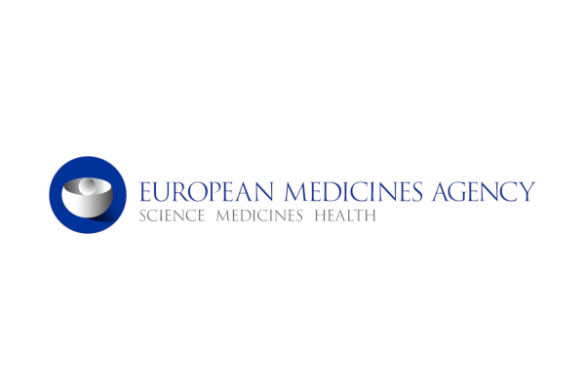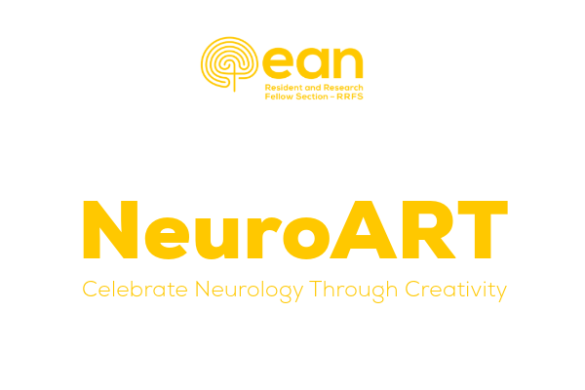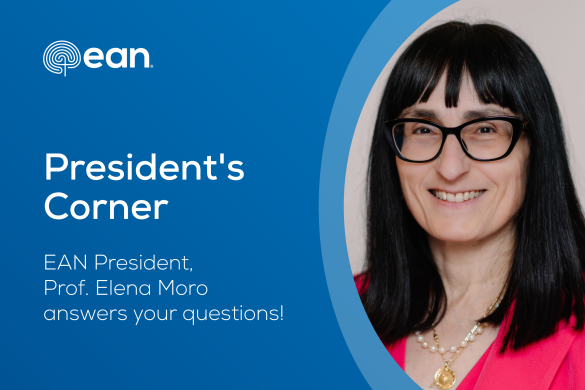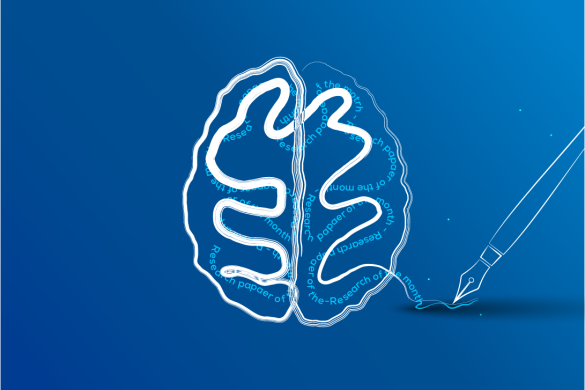by Raphael Wurm
Each month the eanNews editorial team reviews the scientific press for recently published papers of outstanding interest to neurologists. Below we present our selection for September 2025.
For our Paper of the Month, go here: Research Paper of the Month: Lithium deficiency and the onset of Alzheimer’s disease – eanNews
Transferrin receptor–targeted anti-amyloid antibody enhances brain delivery and mitigates ARIA | Science
Current anti-amyloid antibodies for Alzheimer’s disease (AD) are hampered by poor transfer across the blood-brain barrier and the risk of amyloid-related imaging abnormalities (ARIA), a side effect linked to vascular inflammation. This work features a novel antibody transport vehicle (ATV) that targets the transferrin receptor to enhance brain delivery of these drugs. This engineered antibody was designed to maintain its ability to trigger microglia to clear amyloid plaques while improving its biodistribution profile.
In a mouse model of AD, the authors demonstrated superior brain parenchymal distribution compared to conventional antibodies, which tend to accumulate in arterial spaces. This resulted in a near-complete elimination of ARIA-like lesions and the associated vascular inflammation. By improving brain exposure and target engagement while reducing vascular damage, this approach could lead to a safer and more effective immunotherapy for AD. Phase II/III trials are currently recruiting, so stay tuned for more on this in the future.
Read the full paper: Transferrin receptor–targeted anti-amyloid antibody enhances brain delivery and mitigates ARIA | Science
Risdiplam in Presymptomatic Spinal Muscular Atrophy | NEJM
This open-label study investigated the efficacy and safety of daily oral risdiplam in 26 infants (aged 1 to 42 days) with a genetic diagnosis of spinal muscular atrophy (SMA) but no clinical symptoms. The study aimed to determine if early treatment could alter the natural history of the disease, particularly for those with two SMN2 copies who typically develop the most severe phenotype. The primary outcome was the ability to sit without support at 12 months.
At 12 months, 21 of 26 infants (81%) could sit unsupported for 30 seconds , 14 (54%) could stand alone, and 11 (42%) could walk alone. In the primary analysis group (two SMN2 copies and adequate baseline nerve function), 4 out of 5 infants (80%; 95% CI, 28 – 100) achieved the milestone of sitting without support. By 24 months, all 23 infants who remained in the study were alive and free from permanent ventilation or feeding support. These findings suggest that initiating risdiplam in the presymptomatic phase of SMA can lead to substantially better functional and survival outcomes, although larger, controlled trials are needed for confirmation.
Read the full paper: Risdiplam in Presymptomatic Spinal Muscular Atrophy | New England Journal of Medicine
Stimulants for disorders of consciousness in the intensive care unit: a randomized, placebo-controlled trial | Brain
Therapeutic options to directly promote the recovery of consciousness in ICU patients with acute brain injury are limited. This investigator-initiated, randomised, placebo-controlled, double-blind, cross-over trial evaluated the effects of apomorphine and methylphenidate in 50 ICU patients with disorders of consciousness (DoC). The primary outcome was a change in consciousness biomarkers assessed by automated pupillometry, with clinical signs of consciousness a secondary outcome.
The study found that neither apomorphine (odds ratio [OR] 1.35, 95% confidence interval [CI]: 0.93 to 1.96) nor methylphenidate (OR 1.29, 95% CI: 0.89 to 1.86) significantly increased pupillary responses to verbal commands compared to placebo. However, a portion of patients (20%) showed improved clinical arousal at least once following drug administration. Signs of arousal were observed more frequently after methylphenidate (OR 9.96, 95% CI: 1.36 to 235.8) and apomorphine (OR 5.04, 95% CI: 0.56 to 120.7) compared to placebo. A post-hoc analysis suggested that patients with greater baseline pupillary responsiveness were more likely to show clinical arousal, indicating this may be a predictive biomarker. More trials are needed to identify potential subgroups that could benefit from stimulants.
Read the full paper: Stimulants for disorders of consciousness in the intensive care unit: a randomized, placebo-controlled trial | Brain | Oxford Academic
Interplay of genetic predisposition, plasma metabolome and Mediterranean diet in dementia risk and cognitive function | Nat Med
To investigate genotype-specific metabolic pathways in Alzheimer’s disease and related dementias (AD/ADRD), this study integrated genetic, plasma metabolomic, and dietary data from 5,705 participants in prospective cohorts. The analysis revealed that the associations of 57 metabolites with dementia risk were dependent on the participants’ genetic risk profiles, particularly the APOE4 genotype.
The findings suggest that dietary interventions may have genotype-dependent effects. Adherence to the Mediterranean diet may be more effective in individuals homozygous for the APOE4 allele, indicating a potential for targeted prevention strategies. A Mendelian randomisation analysis identified 19 putative causal relationships between metabolites and cognitive outcomes. Among these were protective effects attributed to 4-guanidinobutanoate, carotenoids, and N6-carbamoylthreonyladenosine. Personalised treatment of dementia could thus include genotype-specific dietary interventions – of course, pending randomised trials.
Read the full paper: Interplay of genetic predisposition, plasma metabolome and Mediterranean diet in dementia risk and cognitive function | Nature Medicine
Treatment Response to Antiseizure Medications in People With Newly Diagnosed Focal Epilepsy | JAMA Neurol
Predicting treatment response in newly diagnosed focal epilepsy is a significant clinical challenge. The Human Epilepsy Project prospectively followed 448 individuals with newly diagnosed focal epilepsy for up to six years to describe short- and long-term responses to antiseizure medications (ASMs). The participants, aged 12 to 60 years, were enrolled within four months of initiating ASM treatment. Treatment response was categorised as sensitive (seizure-free on ≤2 ASMs), resistant (failure of ≥2 ASMs), or indeterminate.
Over a median follow-up of 3.13 years, 59.6% of participants achieved seizure freedom for at least 12 months. The cohort was categorised as 54.7% treatment-sensitive, 22.8% treatment-resistant, and 22.5% indeterminate. Among those who were treatment-sensitive, 89.3% responded to monotherapy, with 27% of the total cohort becoming seizure-free on their first ASM. The median time to achieve seizure freedom was 12.1 months (95% CI, 9.7-16.1). Two factors were significantly associated with treatment resistance: individuals with infrequent pretreatment seizures were less likely to be treatment resistant compared to those with very frequent seizures (relative risk [RR], 0.41; 95% CI, 0.18-0.89; P = .03), while those with comorbid psychological disorders at diagnosis were more likely to be treatment resistant (RR, 1.78; 95% CI, 1.26-2.52; P = .001). These findings suggest that for many, seizure freedom takes over a year and more than one medication, and that psychiatric comorbidity is an important prognostic factor.
Read the full paper: Treatment Response to Antiseizure Medications in People With Newly Diagnosed Focal Epilepsy | Epilepsy and Seizures | JAMA Neurology | JAMA Network













